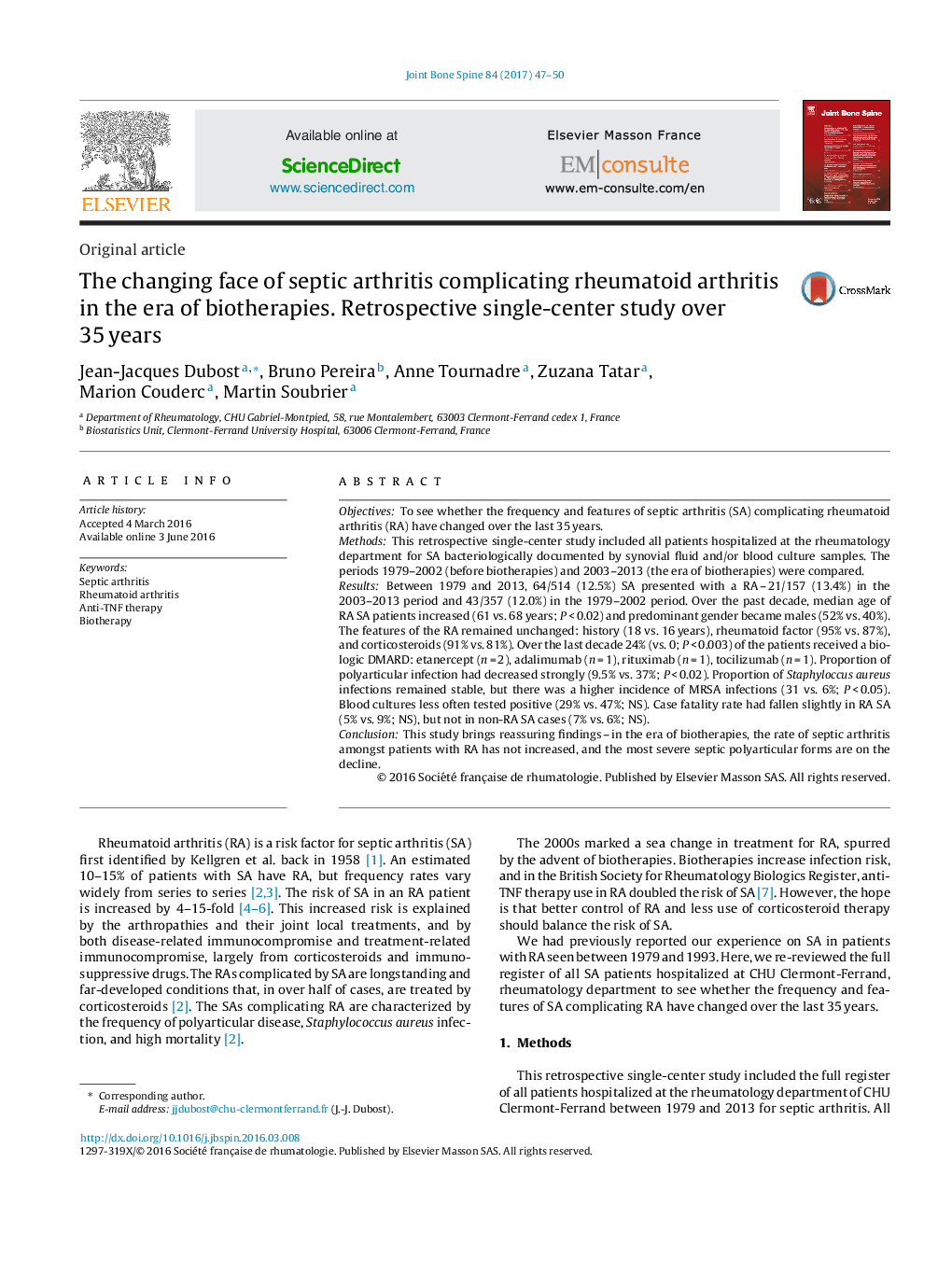| Article ID | Journal | Published Year | Pages | File Type |
|---|---|---|---|---|
| 5667781 | Joint Bone Spine | 2017 | 4 Pages |
ObjectivesTo see whether the frequency and features of septic arthritis (SA) complicating rheumatoid arthritis (RA) have changed over the last 35 years.MethodsThis retrospective single-center study included all patients hospitalized at the rheumatology department for SA bacteriologically documented by synovial fluid and/or blood culture samples. The periods 1979-2002 (before biotherapies) and 2003-2013 (the era of biotherapies) were compared.ResultsBetween 1979 and 2013, 64/514 (12.5%) SA presented with a RA - 21/157 (13.4%) in the 2003-2013 period and 43/357 (12.0%) in the 1979-2002 period. Over the past decade, median age of RA SA patients increased (61 vs. 68 years; P < 0.02) and predominant gender became males (52% vs. 40%). The features of the RA remained unchanged: history (18 vs. 16 years), rheumatoid factor (95% vs. 87%), and corticosteroids (91% vs. 81%). Over the last decade 24% (vs. 0; P < 0.003) of the patients received a biologic DMARD: etanercept (n = 2), adalimumab (n = 1), rituximab (n = 1), tocilizumab (n = 1). Proportion of polyarticular infection had decreased strongly (9.5% vs. 37%; P < 0.02). Proportion of Staphyloccus aureus infections remained stable, but there was a higher incidence of MRSA infections (31 vs. 6%; P < 0.05). Blood cultures less often tested positive (29% vs. 47%; NS). Case fatality rate had fallen slightly in RA SA (5% vs. 9%; NS), but not in non-RA SA cases (7% vs. 6%; NS).ConclusionThis study brings reassuring findings - in the era of biotherapies, the rate of septic arthritis amongst patients with RA has not increased, and the most severe septic polyarticular forms are on the decline.
